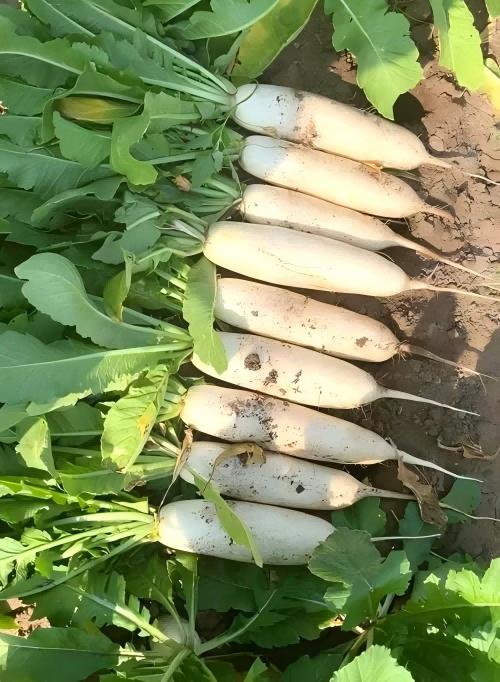An introduction to common white radish varieties! How should you choose when buying white radish? How should you store leftovers?
Nutritional Value of White Radish
Whether cooked in soup, eaten raw, or pickled, white radish is a popular favorite. It also contains a variety of nutrients, including protein, carbohydrates, dietary fiber, calcium, phosphorus, iron, and vitamins.
What are the common varieties of white radish?
The main season for white radishes is from November to March. White radish varieties are diverse and vary greatly in appearance.
Root radish varieties include the round, bulbous “Meihua” variety, the bottle-like “Ganzai” variety, the wooden stake-like “Zizi” variety, and the petite “Shiratama” variety, a Minong specialty belonging to the “Zizi” group.
Other varieties include the “Cherry Radish (Four Seasons Radish)” variety, which is small and cute and comes in either white or red flesh varieties.
Finally, the “Leaf Radish” variety is a leaf radish variety, perfect for salads or appetizers. Its leaves are crisp, hairless, and less spicy, making them a great choice for salads and pickles! How to choose white radish?
There are a few simple tips for choosing white radish. A good white radish should have smooth, tender skin, a bright white color, and be firm, plump, and substantial. The firmer it is when pressed, the better, and it should make a crisp sound when tapped. The stem should be bright green and not withered.
How should I store what I can’t finish?
White radish contains a lot of water. If it’s well-hydrated and ripe, it’s more likely to crack. While cracks may be unsightly, they are delicious! Sometimes the inside of a white radish may swell. This indicates it’s too old, and its flavor and texture will deteriorate.
After buying fresh white radish, if you want to store it whole, it’s best to remove the leaves and store it with the soil removed. Simply wrap it in white newspaper and store it in a cool, well-ventilated place, or refrigerate it. If the radish is cut, it’s recommended to cover the cut with plastic wrap and refrigerate it.


Leave a Reply